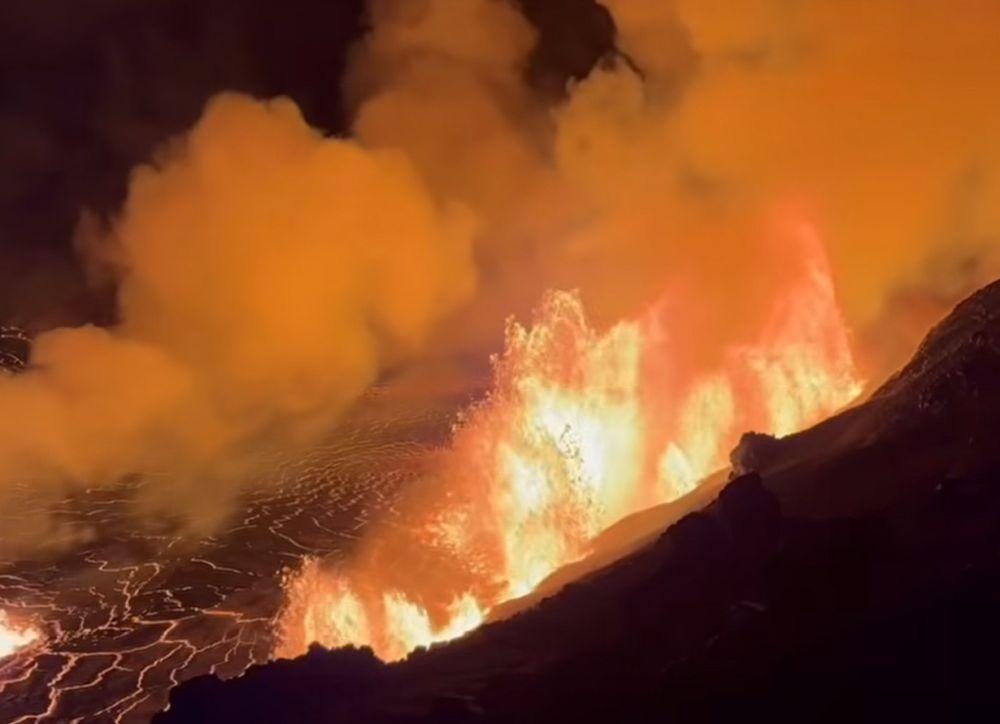
Kīlauea Volcano Ends Year With Impressive Lava Fountains
As the clock struck midnight to usher in a new year, the Kīlauea volcano on the Big Island of Hawaii surprised scientists and observers alike with an impressive display of lava fountains. The eruption, which began within the summit caldera, has sparked concerns over the potential hazards posed by high levels of volcanic gases and the possibility of explosive eruptions.
According to a news release shared by the USGS on their social media channels, the volcano’s alert level has been elevated from ADVISORY to WARNING, and its aviation color code from YELLOW to RED. The decision was made as the eruption and associated hazards are evaluated.
The webcam images provided by the USGS show a line of fissures erupting lava fountains, feeding a flow within the summit caldera. The Kīlauea volcano is one of the most closely monitored active volcanoes in the world, with scientists having access to a range of scientific instruments that measure earthquakes and gas emissions.
While the eruption has been characterized as “harmless” effusive activity, it’s essential to note that the volcano can have phases of impressive explosive eruptions. In May 1924, for example, the volcano experienced around 60 explosions in a single day, resulting in fragments ranging from ash to large blocks the size of cars being sent into the sky and then falling back onto the surrounding landscape.
The Kīlauea volcano has erupted twice in the last 35 years, once at the summit caldera and again at the Pu‘u‘ō‘ō crater on the eastern rift zone. The latter eruption was notable for destroying more than 700 residences as a massive lava flow made its way to the sea.
What sets Kīlauea apart from other volcanoes is its unique ability to transition seamlessly between effusive and explosive activity. In most cases, explosive eruptions are driven by rising magma pressure, steam/vaporized groundwater or some combination of these factors. However, at Kīlauea, the process is different.
During an effusive eruption characterized by lava fountains and flows, the magma reservoir gradually empties. This sudden collapse of the rocky roof above it – the ground within the caldera at the volcano’s summit – results in a rapid increase in pressure within the reservoir. The resulting gas and rubble then find their way through the vents in Kīlauea’s crater.
This “stomp-rocket mechanism” has been likened to a toy where stepping on an air bag connected to a hose launches a projectile into the air. A recent study published just months ago drew this comparison, highlighting the volcano’s distinct characteristics.
As scientists and officials continue to monitor the situation, it remains crucial for observers to stay informed about any developments in real-time.
Source: www.forbes.com


